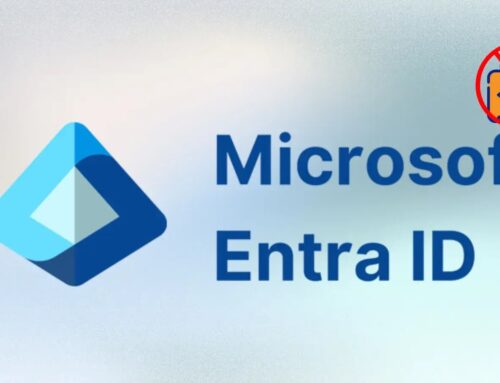
Threat Actors Attacking Organizations Key Employees With Weaponized Copyright Documents to Deliver Noodlophile Stealer
Weaponized Copyright Claims: The New Frontier for Malware Delivery
The digital landscape is constantly shifting, and with it, the tactics employed by malicious actors. A new, highly sophisticated phishing campaign has emerged, directly targeting enterprises with a significant social media footprint. This campaign leverages meticulously crafted, weaponized copyright infringement notices to deliver an evolved threat: the Noodlophile Stealer. This significant escalation from previous malware delivery methods underscores the critical need for organizations to reassess their social media security protocols and employee awareness training.
The Noodlophile Stealer Campaign Defined
This attack vector is a stark departure from traditional broad-brush phishing attempts. Threat actors are now engaging in highly targeted spear-phishing, exploiting enterprises’ inherent reliance on platforms like Facebook. The emails are not generic; they are designed to appear as legitimate copyright infringement allegations, often referencing specific content allegedly posted by the organization. The psychological impact of such a notice, particularly on employees managing social media, can lead to immediate action, bypassing critical security instincts.
The core of this attack is the weaponized document itself. These are not mere links to external sites but often contain embedded malicious code or leverage social engineering to trick users into enabling macros or otherwise compromising their systems upon opening. The goal is the delivery of the Noodlophile Stealer, a malware designed for data exfiltration.
Understanding Noodlophile Stealer’s Evolution
While the specific technical details of the “evolved” Noodlophile Stealer are not fully disclosed in the provided source, the context implies a more potent or refined version compared to its predecessors. Generally, stealer malware focuses on harvesting sensitive information, including:
- Credentials: Usernames and passwords from browsers, email clients, and system applications.
- Financial Data: Credit card numbers, banking details, and cryptocurrency wallet information.
- Personal Identifiable Information (PII): Names, addresses, and other data that can be used for identity theft.
- Sensitive Documents: Files and intellectual property stored on compromised systems.
- Session Cookies: Bypassing multi-factor authentication (MFA) by stealing active session tokens.
The “evolution” likely refers to enhanced evasion techniques, improved data exfiltration methods, or capabilities to target a wider range of data types, making it a significant concern for any organization that becomes a victim.
The Role of Social Media in the Attack Chain
Enterprises’ extensive social media presence, while vital for marketing and engagement, has inadvertently created a new attack surface. Copyright claims, even bogus ones, are a common occurrence on these platforms. This familiarity is weaponized by threat actors:
- The emails mimic legitimate platform notifications or legal correspondence.
- Employees, particularly those in marketing, communications, or legal departments, are primed to respond to such notices quickly.
- The urgency and perceived legitimacy encourage recipients to bypass standard verification processes.
This leverages human psychology and established business processes against the organization, making it a highly effective social engineering tactic.
Remediation Actions and Proactive Defense
Defending against sophisticated social engineering campaigns requires a multi-layered approach that combines technology, policy, and human awareness.
- Employee Training and Awareness:
- Conduct regular, realistic simulated phishing exercises, specifically including scenarios involving copyright infringement claims.
- Train employees to scrutinize email sender addresses, even if they appear legitimate. Highlight the importance of verifying unexpected communications through alternative, trusted channels (e.g., calling the purported sender).
- Educate staff on the dangers of opening unsolicited attachments, especially those requiring macros or external content.
- Emphasize that legitimate copyright notices from major platforms rarely arrive as weaponized documents in emails but rather through official platform notification systems.
- Email Security Enhancements:
- Implement robust email gateway security solutions with advanced threat protection (ATP) capabilities, including sandboxing for attachments and URL filtering to detect malicious content.
- Utilize DMARC, SPF, and DKIM to prevent email spoofing of your own domain and to identify potential spoofing of legitimate entities.
- Configure strict attachment filtering policies, particularly for common executable or scriptable file types.
- Endpoint Detection and Response (EDR)/Extended Detection and Response (XDR):
- Deploy EDR/XDR solutions across all endpoints to detect and respond to suspicious activity, such as malware execution, process injection, or anomalous network connections associated with data exfiltration.
- Least Privilege and Network Segmentation:
- Enforce the principle of least privilege, ensuring employees only have access to the resources absolutely necessary for their role.
- Segment networks to limit lateral movement should a compromise occur on one segment.
- Data Backup and Recovery:
- Maintain regular, isolated, and tested backups of all critical data to facilitate recovery in the event of a successful data stealer attack or broader compromise.
- Incident Response Plan:
- Develop and regularly test an incident response plan specifically for malware infections and data breaches.
- Ensure clear communication channels and roles are defined for containing, eradicating, and recovering from an attack.
Detection and Analysis Tools
Effective defense relies on the right tools for detection and analysis. While no specific CVE is mentioned for this particular Noodlophile iteration, general cybersecurity tools remain vital.
| Tool Name | Purpose | Link |
|---|---|---|
| Virustotal | Comprehensive file and URL analysis for malware detection. | https://www.virustotal.com/ |
| ANY.RUN | Interactive malware analysis sandbox for advanced threat evaluation. | https://any.run/ |
| Mandiant Helix | Incident response and threat intelligence platform. | https://www.mandiant.com/products/mandiant-helix |
| Proofpoint ATP | Email security platform with advanced threat protection, including URL defense and attachment sandboxing. | https://www.proofpoint.com/us/products/email-protection/advanced-threat-protection |
| Microsoft Defender for Endpoint | Enterprise endpoint security platform for prevention, detection, investigation, and response. | https://www.microsoft.com/en-us/security/business/endpoint-security/microsoft-defender-endpoint |
Key Takeaways for Businesses
The weaponized copyright notice campaign delivering Noodlophile Stealer serves as a critical reminder: threat actors are continuously refining their social engineering techniques. Organizations must move beyond basic email filtering and cultivate a culture of vigilance among employees. Proactive training, robust technical controls, and a well-rehearsed incident response plan are not optional; they are fundamental components of a resilient cybersecurity posture in an era where human psychology is as much an attack vector as any technical vulnerability.





